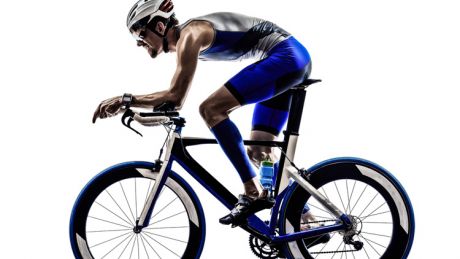How technology can make you a better cyclist
We spoke to Dr Auriel Forrester, a sports scientist from Scientific Coaching, about new technological advancements in cycling

What technology do you use to help cyclists?
We can measure all sorts of data from cycling. Heart rate, speed, cadence and even power output can all be recorded and tracked. Our SRM captures information at intervals down to fractions of seconds so you get the most accurate information about your ride. A screen allows you to keep track of all these statistics in real time while you ride.
How does data-tracking technology improve cycling?
I use data from technology to work with cyclists to produce training schedules. This works so well with cycling because of the sheer wealth of information. Rather than measuring heart rate alone, like a runner might, we can keep tabs on the result of that increased heart rate – the rate at which you turn the pedals and the power you put into it. All this information lets us set specific targets for the next ride, so then you can work on moderating it. For instance, if the data reveals that you burn yourself out at the beginning of a ride, you can resolve to stay consistently under a certain power output on your next ride. Then you keep an eye on the monitor to make sure you stick to it! Technology eliminates all the variable influences - such as tiredness, hunger, and mood - that makes cycling feel hard and objectively tells you how you're doing. For instance, you’d know if your endurance had definitively deteriorated if you could usually manage a power output of 180 watts over a two-hour ride with a heart rate of 165bpm, and it went up to 170bpm for 180 watts. You could then improve with the power meter using a combination of long rides with a sustained heart rate of under 165bpm and shorter, more intensive sessions building towards the 180-watt power. You’ll be able to see your sustainable power increase and your heart rate decrease, until you can average 180 watts at 165bpm. You will know your maximal power over certain periods of time – you can use that information to adjust your training to increase your power, and keep monitoring your progress.
Who can benefit?
Amateur cyclists can get more benefit from the targeted nature of performance metrics than professional cyclists can. Most of us have less time to practise than professionals, and so more pressure to ensure our training achieves specific goals. You want to make sure you’re as productive as possibly by working towards particular targets in training sessions. That’s what technology will tell you – that you ticked that box.
Can technology and data distract you from cycling?
Get the Coach Newsletter
Sign up for workout ideas, training advice, reviews of the latest gear and more.
Paying attention to the data technology gives you will actually help you to improve faster than if you rely on your intuition. You understand exactly what aspect of your performance needs an upgrade, and you’ll have a far clearer idea of how you’re improving. On the other hand, you shouldn’t get obsessed with data. Technology can only ever be one factor in creating your training plan, and you also need to take into account your personal needs and gut instincts.
Other cycling technology:
http://scientific.nsdesign5.net/srm-training-systems/srm-powermeters-and-systems/srm-track.html The SRM Power Meter Dr. Forrester uses offers unrivalled accuracy for measuring the power you put into your ride.
http://www.evanscycles.com/products/cateye/strada-cadence-computer-ec008447#features This little contraption doesn’t offer the comprehensiveness of the SRM machines, but at a fraction of the price it’ll let you keep an eye on how fast you spin those wheels.
http://www.wiggle.co.uk/garmin-edge-1000-performance-bundle/ This handy bundle comes with all the equipment needed to let you know where you’re headed, how fast you’re getting there, and how powerfully you’re pushing the pedals.
